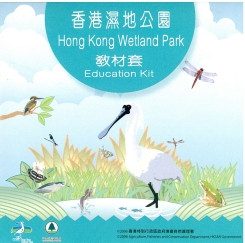
Hong Kong Wetland Park (HKWP) produced a "HKWP Education Kit" in October 2006. The Education Kit is divided into three parts - student’s worksheets (54 topics in total), teachers’ guides and education accessories. We hope that this education kit can facilitate teacher’s preparation for teaching topics related to wetland ecology and conservation. Students can also make use of the worksheets as self-learning materials.
Please click the topics below to download the worksheets (in PDF format, please use Adobe Acrobat Reader to view the files).